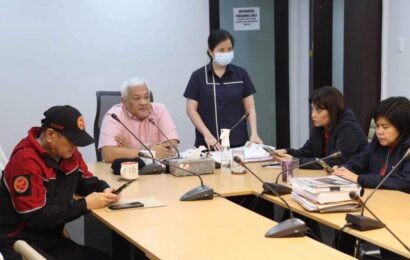
CITY OF MALOLOS, Bulacan (PIA) – The viaduct of the mammoth North-South Commuter Railway (NSCR) Phase 1 Project from the City of Malolos to Bocaue, Bulacan is now completed.
The 14-kilometer completed section of the viaduct traverses from newly-constructed railway turnouts in front of Bulacan State University (BulSU)-Malolos campus, the municipalities of Guiguinto, Balagtas up to Bocaue where they have one station each.
Department of Transportation (DOTr) Assistant Secretary for Railways Jorjette Aquino said, this milestone is in response to the marching order of President Ferdinand R. Marcos Jr.’s directive to fast-track big-ticket and high-impact railway projects.
It is attributed to the completion of the installation of fabricated viaducts in major sections of Malolos Crossing, Fausta Road, San Pablo Road, First Bulacan Industrial City, Tabang Bridge traversing Manila North Road in Guiguinto, Balagtas-Pandi Road and the Bocaue-Santa Maria Bypass Road in Bocaue section.
Construction of NSCR Viaduct from Bocaue to Meycauayan City is in full swing. DOTr is targeting the completion of the viaduct up to its depot located between Meycauayan City and Valenzuela City by the end of 2024.
The remaining portion of the viaduct from the riverbank of the Marilao-Meycauayan-Obando River System towards the vicinity of SM City Marilao is set to be launch on April 2024.
This will be the location of NSCR Marilao station alongside with an intermodal transport terminal to be built by the said mall.
Currently, the construction progress for NSCR Phase 1 or the Tutuban-Malolos segment is 37.30%. NSCR Phase 2 or the Malolos to Clark International Airport (Terminal 2) is at 25.76%. While the drilling and pilling for the foundation of NSCR-South Commuter Line is jumpstarting in Sta. Rosa City, Laguna.
Aquino added that DOTr targets NSCR Phase 1 to be partially operational from Valenzuela to Malolos by 2027.
The 147 kilometer NSCR System is the largest and longest railway project being completed by the Marcos Jr. administration under its Build-Better More Infrastructure Program. It traversed the old route of the Philippine National Railways (PNR) from Clark International Airport Terminal 2 in Pampanga up to Calamba City, Laguna.
Once completed by 2029, NSCR System will reduce travel time between Clark and Calamba from the current four hours by land to two hours by railways.
Data obtained from DOTr showed that NSCR System project is amounted to P873.6 billion. On the said amount, P369.27 billion is provided by the Official Development Assistance (ODA) of Japan International Cooperation Agency (JICA) and P329.5 billion from the Asian Development Bank (ADB).
The remaining P174.7 billion is shouldered by the Philippine government thru its annual national budget.
Funding from JICA and ADB covered the construction of viaducts, installation of railway tracks and electro-mechanical and the assembly of the 304 rolling stocks.
It is equivalent to 38 train sets with eight railcars each for commuter trains of NSCR from Japan
Recently, DOTr has awarded the P9 billion contract for the assembly of 56 rolling stocks or equivalent to seven train sets that will be use for the express trains of NSCR.
Meanwhile, DOTr is planning to interlink NSCR Sytem to the PNR South Long Haul Project that will run from Calamba City to Matnog, Sorsogon. Then there is the proposed PNR North Long Haul Project that will extend NSCR to further northern Luzon is currently under study according to the Public-Private Partnership (PPP) Center.





